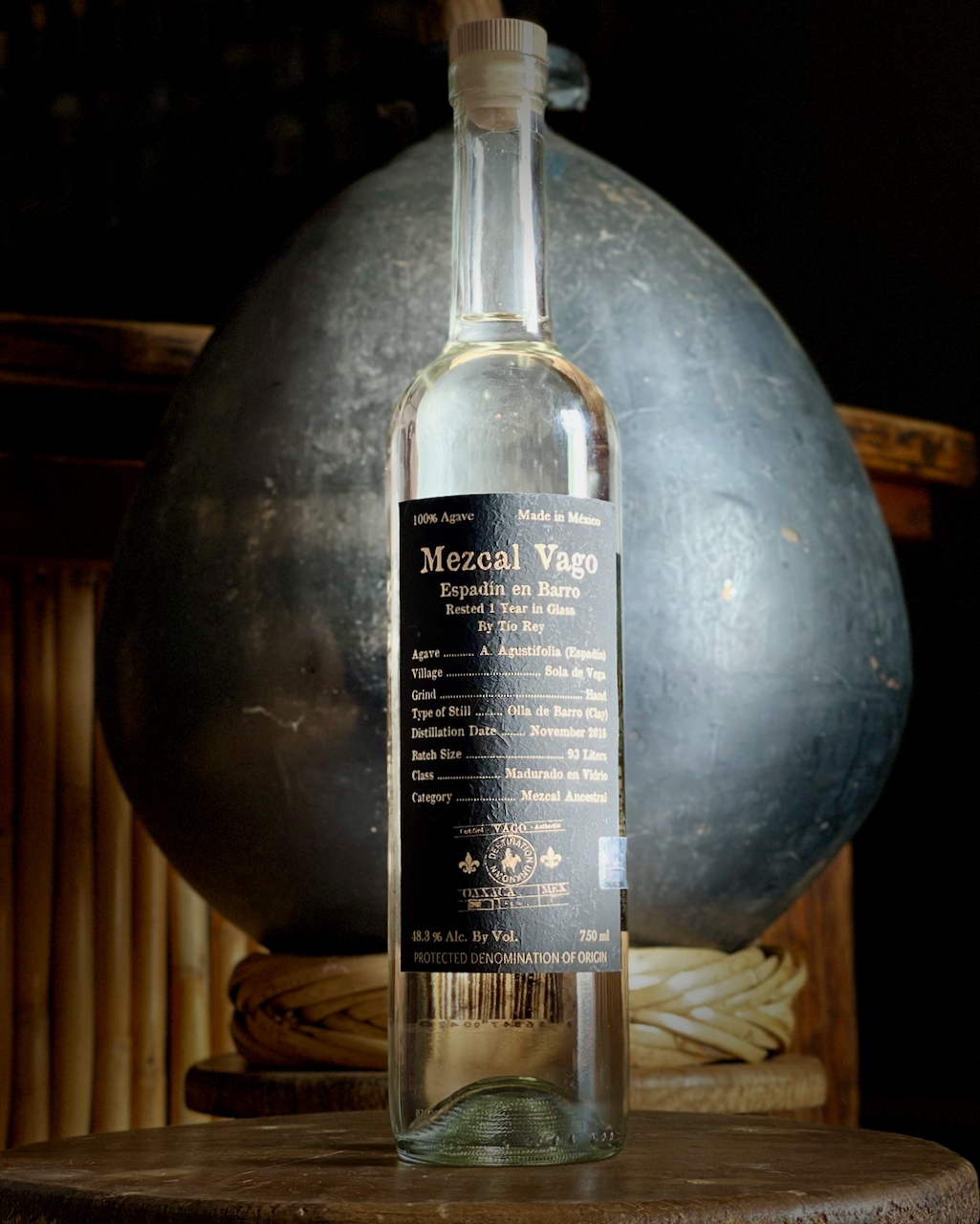Cuixe de Emigdio Jarquín Ramírez
We’ve been talking about Don Emigdio Jarquín Ramírez for quite some time now and we are so honored to be able to continue to showcase his incredible style and share his Cuixe with all of you.

Agave Cuixe
What we have called Cuixe (pronounced cuishe) in the past is referred to as Bicuixe in the region surrounding Miahuatlán de Porfirio Díaz. When speaking with our mezcaleros, we typically refer to the agave using whatever regional term they are accustomed to, but to avoid confusion among consumers, we have tried to remain consistent when it comes to bottling. As such, although this label says Cuixe, Emigdio knows it as Bicuixe. Regardless of what it is called, it is a member of the Agave Karwinskii family. Karwinskiis are quite unique in that across the several sub-varities that exist, they all grow on stalks that can reach up to 4 feet tall with the rosette or piña growing on top of the stalk, resulting in a plant that can reach heights of up to 7 feet. Agave in the Karwinskii family can often take between 15 and 18 years to mature.
Between the different sub-varieties, there are different ratios of stalk to piña which can affect the final flavor. The starches in the stalk are structured differently, such that they do not always break down during the roasting process. As a result, in sub-varieties like Cuixe and Madrecuixe that have more stalk in relation to the piña, this can result in mezcales that do have a core of agave sweetness that most are used to, but there is an overall dry and starchy quality to the mezcales that can linger on the palate. Madrecuixe typically has a larger piña than Cuixe, resulting in mezcales that do have that starchy, grassy note often associated with Cuixe, but with a touch more sweetness and body. One reason that Madrecuixe is so named is because they often grow as solitary plants surrounded by several Cuixe, as though they are protecting, or a “mother” (madre) plant. However, the Cuixe are not part of the Madrecuixe.
The distribution of Agave Karwinskii can be seen in the map below.

*Map provided by CONABIO website

Producer: Emigdio Jarquín Ramírez
Mezcal goes back in his family at least three generations, Emigdio having learned it from his grandfather. Their horno is a conical pit dug into the earth, which can hold up to 7 tons of Espadin. Emigdio usually roasts his agave for 5-7 days, which is on the longer end of an average roast. He then lets it rest in the sun to cool for one to two weeks.

Emigdio’s Tahona
They use a cement tahona lined with rocks and pulled by mule to crush their agave. Once crushed, they use four Ocote wood fermentation vats with volumes of 1,470, 1,600, 1,600, and 1,700 liters, which usually take around three days to ferment to completion.

Refrescador Still Exterior

Refrescador Still Condensor
Distillation is done in a 300 l. copper refrescador still. Refrescador is a technique that is common to the area surrounding Miahuatlan, but Vago has never used before. The still looks similar to a copper alembique still with a stainless steel cylinder surrounding it. This cylinder is then filled with water, allowing it to cool the upper part of the still. This upper chamber now acts as a condenser and sends the alcohol vapor back down into the boiler before being heated again and passing out of the still and into the condensing coil. This method essentially allows for two distillations during a single pass through the still. Cuts are made using a carizzo to test for ABV as well as taste and smell. A full capacity 300 l. still will produce, on average, 100 l. of mezcal in roughly 14 hours.
A full roast of 700 tons will produce up to 700 l. of mezcal depending upon the which agave is being used. ABV is then adjusted by using colas that have been rested with distilled water in order to preserve taste and mouthfeel. Like all Vago mezcal, Emigdio’s goes through a simple sediment filtration through a tubular cellulose filter before bottling. The bottling is done by hand in Oaxaca City. The very light filtration is the only way the mezcal is affected between when it was made on the palenque and how it ends up in the bottle.

Location: Miahuatlán de Porfirio Díaz
Emigdio distills outside of Miahuatlán de Porfirio Díaz. We are very proud and excited to have finally found a mezcalero from this area we can put in a Vago bottle. Miahuatlán is a historically important town in mezcal production as well as where both Aquilino and Tío Rey’s families emigrated from. By adding Emigdio to the family, we are able to extend the conversation of our history and tradition even further back in time.
Emigdio’s land is in the Nanche district of Miahuatlán de Porfirio Diaz, about 2 ½ hours directly South of Oaxaca City. The palenque sits at around 4,970 ft., among gently rolling hills and shallow arroyos in a semi-arid climate. In the surrounding area grows Agave Espadín, Mexicano Verde, Tobalá, Tepeztate, Arroqueño, Pulquero, Madre Cuixe, and Bicuixe (Cuixe).
Glossary
Brix - Brix is a scale of sugar content measured in grams/solution, where one degree Brix equals 1 gram of sugar per 100 grams of solution.
Ordinario - The regional term for first-run distillate. It usually has an ABV between 20 - 30% ABV. Sometimes called xixe.
Rectifiicación- The refining of xixe or ordinario through a second distillation.
Tepache - A low-alcohol mixture of agave juice, fiber and water. Tepache typically has an ABV of ~4-8%. Often referred to as mosto.
Works Cited
CONABIO. Agave, Mezcales, y Biodiversidad. A. Karwinskii http://www.biodiversidad.gob.mx/usos/mezcales/A_karwinskii.html
Gentry. Agave of Continental North America. The University of Arizona Press. Tucson. 2004







